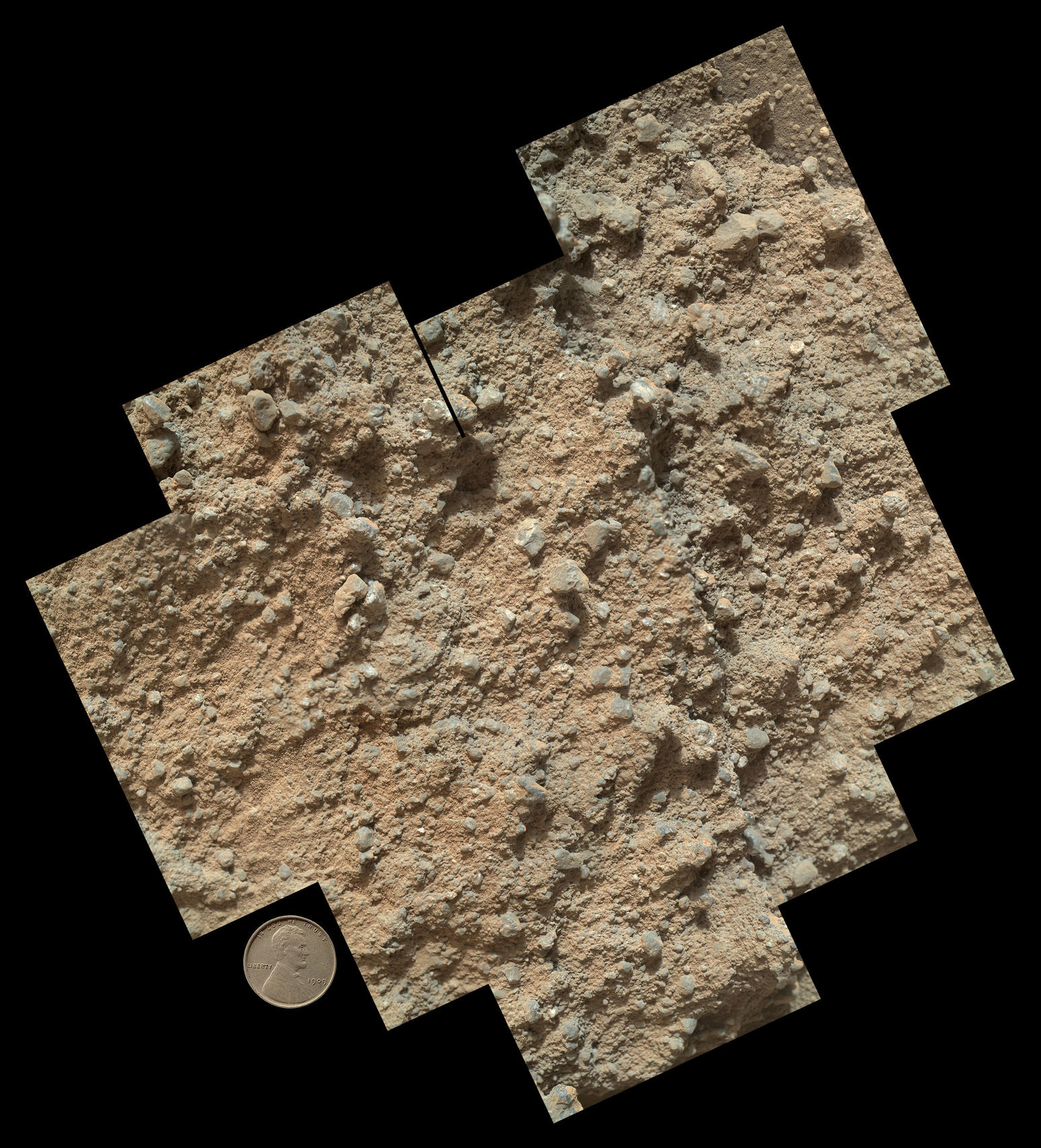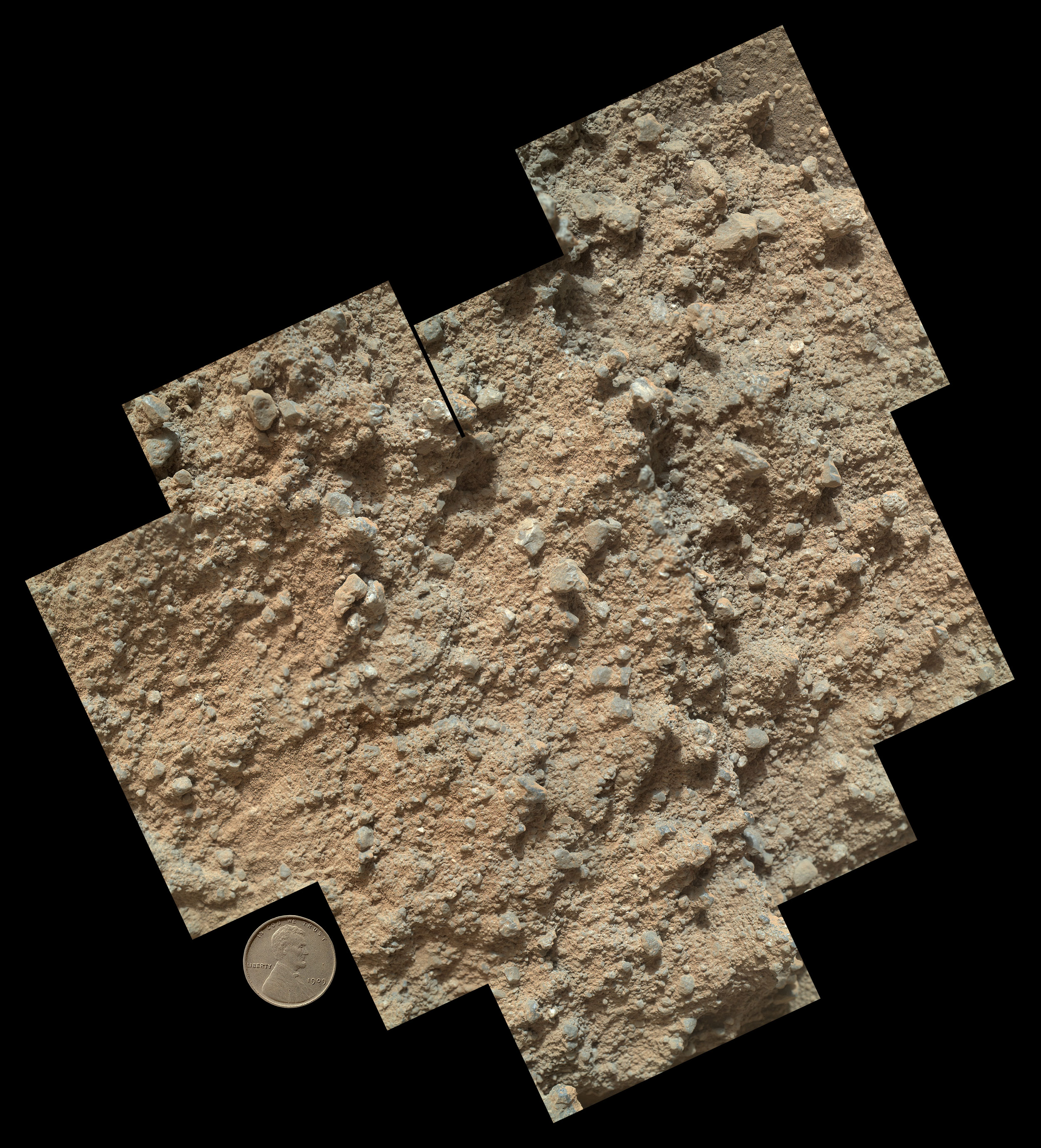Pebbly Sandstone Conglomerate Rock at Curiosity’s Waypoint 1

| Credit | NASA/JPL-Caltech/MSSS |
|---|---|
| Language |
|
This mosaic of nine images, taken by the Mars Hand Lens Imager (MAHLI) camera on NASA's Mars rover Curiosity, shows detailed texture in a conglomerate rock bearing small pebbles and sand-size particles.
The rock is at a location called "Darwin," inside Gale Crater. Exposed outcrop at this location, visible in images from the High Resolution Imaging Science Experment (HiRISE) camera on NASA's Mars Reconnaissance Orbiter, prompted Curiosity's science team to select it as the mission's first waypoint during the mission's long trek from the "Glenelg" area to Mount Sharp.
MAHLI took the component images shortly before sunset on the 400th Martian day, or sol, of Curiosity's work on Mars (Sept. 21, 2013). The camera was positioned about 4 inches (10 centimeters) from the rock. Scale is indicated by the Lincoln penny from the MAHLI calibration target, shown beside the mosaic.
Reddish dust coats much of the surface visible in this mosaic, but the patch of rock also offers some bare patches where sand and pebble grains can be seen. Pebbles here are mostly gray, with some white in them. Some grains are somewhat translucent, and some are shiny.
Researchers interpret the sand and pebbles in the rock as material that was deposited by flowing water, then later buried and cemented into rock. Curiosity's science team is studying the textures and composition of the conglomerate rock at Darwin to understand its relationship to streambed conglomerate rock found closer to Curiosity's landing site. A major goal for observations at waypoint stops along the 5-mile (8-kilometer) route to Mount Sharp is to piece together the relationship between rock layers at "Yellowknife Bay" in the Glenelg area, where the mission found evidence of an ancient freshwater-lake environment favorable for microbial life, and layers at the main destination on lower slopes of Mount Sharp.

